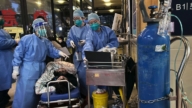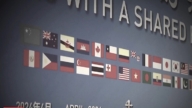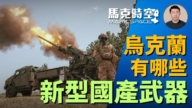【新唐人2015年02月06日讯】中共央行4号突然宣布,5号起下调金融机构人民币存款准备金率0.5个百分点。这个消息结合日前公布的中国资本账户创记录逆差,以及1月份制造业PMI创2年半来新低,引发了市场的不安。有分析指出,央行这次降准能起到短期作用,GDP增长不至于降到7%以下,但无法改变经济下滑的长期趋势。
据央行公告,自2月5号起下调金融机构人民币存款准备金率0.5个百分点,这是超过两年半以来的首次降准决定。大型金融机构由此前20%的存款准备金率降至19.5%,而中小金融机构由此前16.5%的存款准备金率降至16%。
此外,央行加大对小微企业、“三农”以及重大水利工程建设的支持力度,对小微企业贷款占比达到定向降准标准的城市商业银行、非县域农村商业银行,额外降低人民币存款准备金率0.5个百分点,对中国农业发展银行额外降低人民币存款准备金率4个百分点。
交通银行金融研究中心研究员徐博向《北京商报》表示,这次降准大约能释放6000亿到7000亿人民币的流动性。中信证券宏观团队认为,根据当前的基础货币和准备金率,这次降准大约能导致货币总量增加2万亿元以上。
美国大唐集团中国区首席经济学家谢作诗指出,央行这次降准反映了中国实体经济的困难。
美国大唐集团中国区首席经济学家谢作诗:“0513它降准就可见实体经济困难,这是一个什么背景,是热钱的外流、人民币面临贬值压力,对美元贬值压力,在这样一个背景之下,它来降准,那当然是反映出实体经济困难的局面了。”
中共国家统计局和物流与采购联合会2月1号公布的数据显示,1月官方制造业采购经理人指数(PMI)降到49.8,跌破景气荣枯分界线50,创2012年9月以来新低,非制造业PMI也降到一年来新低53.7。
而中共外汇管理局网站也在3号公布,去年第4季中国资本和金融账户逆差达912亿美元,是1998年以来最大的资本账户赤字。
美国《彭博通讯社》引述瑞穗证券亚洲驻香港首席经济学家沈建光的话指出,外管局公布的数据表明,中国的经济结构发生变化,人民币贬值的预期,推动了资本外流。
美国中文杂志《中国事务》总编辑伍凡指出,中国经济下滑、资金外逃,加上年关将至,促使央行必须采取降准的动作。
美国中文杂志《中国事务》总编辑伍凡:“经济下滑非常明显,一月份的PMI指数已经降到了49.8。现在年关要到了,市面上钱非常紧,原因就是910亿美金,从人民币换掉,换成910亿美金,跑掉了。第二,你生产下滑,没有利润回来,发不出薪水,而年关到了,员工要钱,要过年,所以它不得不放这个钱,来支撑这些国营企业和民间企业。”
不过,伍凡认为,央行放出的这些钱会跑到股市,对实体经济没有帮助。
伍凡:“中国降准、降息,放了几千亿美金出来,实际上也是一种变相的量化宽松,可是,钱的走向会到哪里去,我估计很可能还会走上股票市场,因为放到实体经济没有效益,不能够产生利润嘛,它不如放到股票市场去炒作,所以放这么多的钱,根本对中国的实体经济不会有任何好处,起不了作用。可是它目前过年了,不得不放。”
澳新银行经济学家刘立刚认为,央行这次降准的主要原因是,1月份PMI远远低于预期,如果没有进一步政策反应,那么今年第一季度GDP增长很可能跌到7%以下。
据了解,央行去年11月突然降息,2014年全年GDP较上年增长7.4%,为近24年新低,勉强实现“7.5%左右增长”的政府目标。
谢作诗:“肯定政府是怕经济巨幅的下滑,巨幅的滑到7以下,那它是可怕的。巨幅下滑可能就会造成企业倒闭、爆发金融危机、引起社会不稳定,它怕的是这个。”
谢作诗指出,无论是央行这次降准,或者将来更多的降准、降息,都阻止不了中国经济下滑的趋势,不可能光靠一个货币政策改变这个趋势,不过它确实可以拖一下,让经济不致于巨幅掉下来。
采访/易如 编辑/陈洁 后制/舒灿
Analysts: the CCP’s Abrupt Cut in RRR is to Prevent Big Fall in GDP Growth
The Chinese Communist Party’s (CCP) Central Bank
announced abruptly on Feb. 4 that the required reserve ratio
(RRR) for CNY will be cut by 0.5 percentage point
beginning on the 5th.
The news, along with China’s biggest capital outflow
and record-low January PMI seen in 2.5 years,
jitters the global market.
Analysts said the cut in RRR may work temporarily
to keep GDP growth above seven percent;
however, it cannot stop the long-term slide
in China’s economy.
The People’s Bank of China (PBoC) announced
that the RRR for Chinese Yuan would be cut
by a 0.5 percentage point begining Feb. 5.
The move is the first RRR cut since
two and a half years ago.
Big banks are now required to hold 19.5 percent
(down from 20 percent) of their deposits as reserves,
and smaller banks’ RRR dropped to 16 percent
from 16.5 percent.
In addition, PBoC stepped up support
for small or micro businesses, farmers
and the agriculture industry and major water projects.
An additional RRR cut of 0.5 percentage point
was announced for city commercial banks
and non-county-level rural commercial banks
that are eligible for the policy.
An extra RRR cut of four percentage points was also
announced for the Agricultural Development Bank of China.
Xu Bo, Bank of Communications Research Center researcher,
told Beijing Business News that the move can create
extra liquidity capacity of 96 to 112 billion dollars
(600 to 700 billion CNY).
CITIC Securities Macro-economy Team estimates that
the RRR cut will increase China’s monetary base
by over $320 billion (2 trillion CNY) according
to the current base currency and reserve ratio.
Xie Zuoshi, chief economist of American Da Tang Group
in China, commented that the cut in RRR results
from difficulties the CCP is facing in the economy.
Xie Zuoshi: “The cut in RRR is a result of difficulties
in real economy.
The backdrop is huge capital outflow and downward
pressure on CNY, especially against dollars.
The cut in RRR is announced in such a situation; therefore
it is without a doubt an indication of economic troubles."
The CCP’s National Bureau of Statistics and China Federation
of Logistics & Purchasing jointly announced on Feb. 1 that
China’s official Purchasing Managers’ Index (PMI)
fell to 49.8 in January.
This PMI drops below the 50-point level that separates
growth from contraction on a monthly basis,
and is a record-low since September 2012.
The official non-manufacturing PMI also fell to 53.7,
a record-low in the past year.
On Feb. 3, the CCP’s State Administration of Foreign
Exchange (SAFE) also announced a fourth-quarter deficit
of $91.2 billion in capital and financial accounts.
The figure is again a record-high since 1998.
A Bloomberg interview with Shen Jianguang,
chief Asia economist at Mizuho Securities Asia Limited,
commented that the official SAFE statistics suggest
a structural change in China’s economy;
the anticipation in CNY depreciation further drives
more capital to flow out of China.
Wu Fan, chief-in-editor of China Affairs magazine said
the economic slide, capital outflow and the upcoming
Chinese New Year are factors forcing PBoC
to make the RRR cut.
Wu Fan: “It is easy to see the economic slowdown in China
as January’s PMI fell to 49.8.
As the Chinese New Year is approaching, China’s market
is short of money because $91 billion escaped from China.
In addition, declines in the manufacturing industry
leads to problems in wage payment.
Employees need money to spend during the holiday,
so the Central Bank has to release some reserves
to the market, to support both state-owned
and private enterprises."
On the other hand, Wu Fan believes the released liquidity
will mostly be used in the stock market and thus helps
little in China’s real economy.
Wu Fan: “The CCP released hundreds of billions of dollars
by cutting RRR and the interest rate.
This can be regarded as another form of quantitative easing.
However, where will the money go?
I think probably the stock market.
The reason is the capital can make little profits
if being put into the real economy right now.
So people will prefer to invest in the stock market.
If so, the released capital can hardly benefit
China’s real economy.
But there is no other choice as the Chinese New Year
is coming."
Liu Ligang, economist of ANZ Bank, said the RRR cut
mostly results from the much worse PMI performance
than expected in January.
With no administrative interference, China’s GDP growth
will probably fall to below seven percent in the first quarter
of 2015.
The PBoC made an abrupt cut in interest rates
last November.
As a result, the CCP announced a GDP growth
of 7.4 percent in 2014, a record-low in 24 years.
However, it still barely achieved the goal of 7.5 percent
in GDP growth.
Xie Zuoshi: “The CCP government must be afraid
of a huge economic slide.
If the GDP growth falls below seven percent then that
will be horrifying.
A huge economic slide may lead to mass bankruptcy,
financial crisis and social instability.
These are what the CCP is most afraid to see."
Xie Zuoshi concluded that no matter how many times PBoC
cuts RRR or interest rates, there is no way
to stop China’s economic slowdown.
Any single monetary policy will never reverse the trend.
On the other hand, these moves do have temporarily effects
in preventing a sudden economic collapse.
Interview/YiRu Edit/ChenJie Post-Production/ShuCan





























